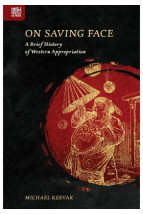The Story of a Stele
China’s Nestorian Monument and Its Reception in the West, 1625–1916
(碑的故事:中國的景教碑及其在西方的迴響(1625年至1916年))
ISBN : 978-962-209-895-4
January 2008
208 pages, 6″ x 9″
- HK$295.00
Ebooks
Western readers have yet to come to terms with the fact that during much of our history very little was ever “known” about China. There was never any lack of information from missionaries and travelers and traders. But what kind of information was it? What kind of knowledge was obtainable via the lenses of religious intolerance, colonial ambition, or Eurocentrism? Travel accounts, Jesuit letter-books, or embassy narratives can sometimes seem comparatively dispassionate, even ethnographic, but one is repeatedly struck by a remarkable vagueness when it comes to discussions of the foreign, and such discussions become buried in a huge mélange of fact and fiction that is then collected, retold, or reintegrated in innumerable ways. The thesis of this book is that when Westerners discussed the Nestorian monument they were not really talking about China at all. The stone served as a kind of screen onto which they could project their own self-image and this is what they were looking at, not China. The stone came to represent the empire and its history for many Western readers, but only because it was seen as a tiny bit of the West that was already there.
This is the first detailed study in English of the Western reception of the monument since its discovery in Xi'an in 1625. It will be essential reading for those interested in East Asian colonialism, in the vagaries of cross-cultural contact between East and West, and in the way in which, from the very beginning of the period of Western presence in China, the empire was viewed as little more than an extension of European prejudices about the superiority of its own cultures, religions, and conceptual paradigms.
“Michael Keevak has written a story about the way in which places, objects, and even time travel through the imagination and cultures of people. The meticulous description of the problems and controversies that have surrounded the inscription on the Nestorian Stele for centuries results in the fascinating anatomy of one of the formative episodes of the West’s engagement with Chinese culture and history. Keevak’s reconstruction of the journey of the ‘stone’ in the intellectual and religious universe of the European early modernity also invites larger questions about the transmission, search for, and uses of knowledge. For all his apologies, Keevak writes splendidly and eruditely, and with a sense for the ‘other’ that is both delicate and deep. This book will delight anyone interested in the life and vicissitudes of cultural monuments.” —Nicola Di Cosmo, Henry Luce Foundation Professor of East Asian Studies, School of Historical Study, Institute for Advanced Study, author of Diary of a Manchu Soldier in Seventeenth-Century China
“Michael Keevak, whose earlier studies of the historical/
“Michael Keevak tells a compelling story of how the European imaginaire of an early Christian China was resurrected with the recovery of the tantalizing Nestorian Stele in the ancient capital of China during the early seventeenth century. This iconic stele, with its Christian message of the cross, probably buried in the eighth century to protect it from anti-foreign persecutions by the imperial court, provided powerful, indisputable proof of an early Christian presence in China for those latter-day European missionaries all too predisposed to find it.” —Roger T. Ames, Professor of Philosophy, University of Hawai‘i, co-translator of Daodejing: Making This Life Significant: A Philosophical Translation




